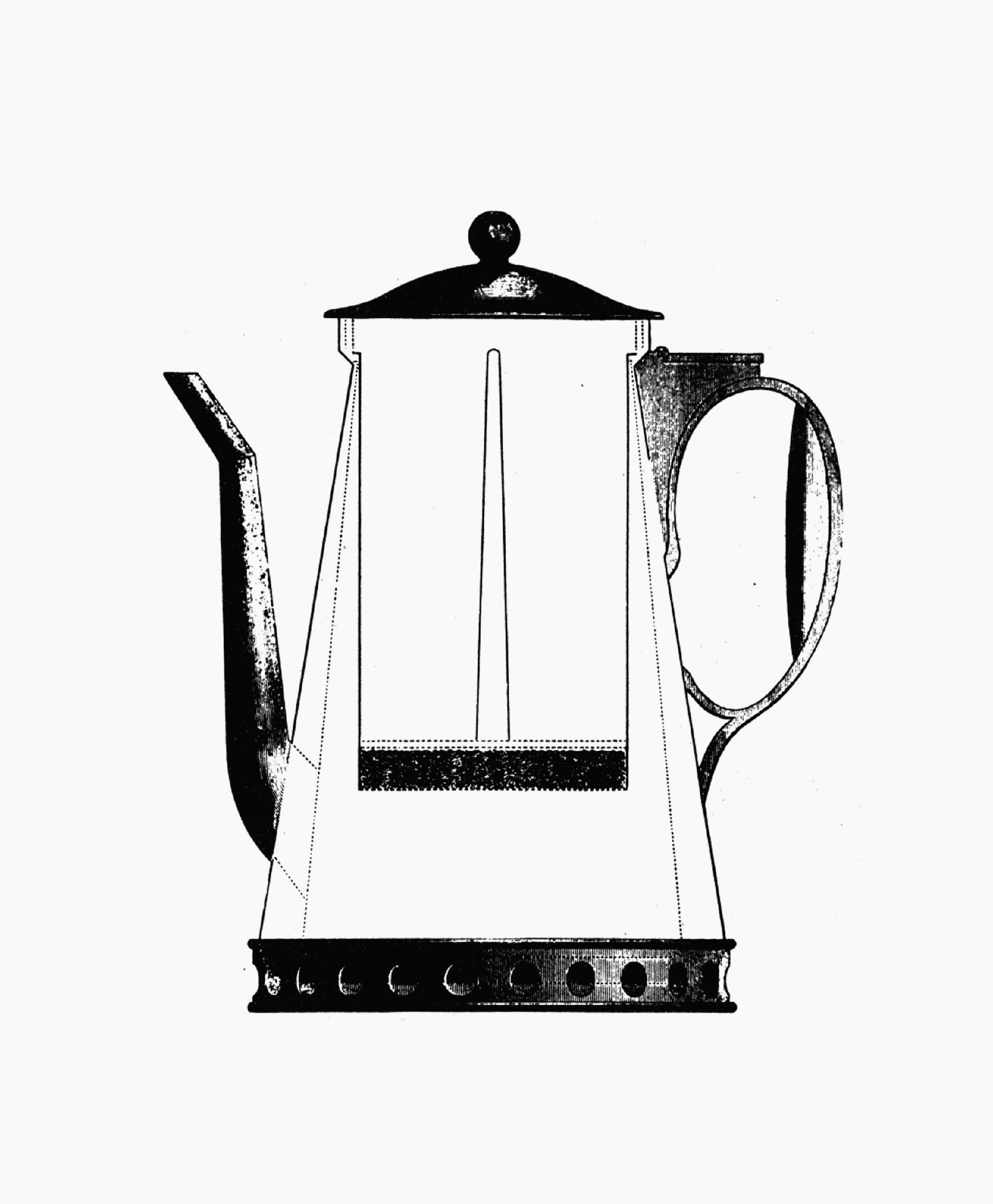The Short History of Steep-and-Release Brewers
Compared with the long history of other brewing methods we explore in this course, ‘steep-and-release’ brewers are a recent invention. This category of coffee maker has been in widespread use for little more than a decade. However, the idea of a full-immersion brew that is subsequently filtered to improve the clarity of the cup can be traced back to the eighteenth century.
At that time, coffee was most commonly made by boiling the coffee in a jug and decanting the brew. Around 1710, a design appeared in France for a coffee brewer that incorporated a linen bag inside the pot; the bag suspended the ground coffee in water (Ukers 1922). At the end of the brewing time, the bag could be pulled out to separate the coffee grinds from the liquid, resulting in a clearer cup.
 Illustration: A ‘coffee biggin’ designed by Benjamin Thompson, Count Rumford, in the early 19th century.
Illustration: A ‘coffee biggin’ designed by Benjamin Thompson, Count Rumford, in the early 19th century.
This type of brewer came to be known in English-speaking countries as a ‘coffee biggin’, perhaps named after a Mr Biggin who popularised the design in England. Some biggins held the coffee above the liquid and were brewed like a pour-over — but others suspended the coffee in the water, which made them a full-immersion method. While rarely used for coffee today, this type of brewer is widely used for brewing tea.
Steep-and-release methods differ from the coffee biggin in that the liquid is allowed to drain out from the brew gently, rather than being poured out through a filter or disturbed by removal of a bag of coffee grinds. The first steep-and-release designs were intended for brewing tea rather than coffee. A 1986 patent describes a tea infuser with a manually controlled valve that lets the tea pass through a filter into a lower chamber when the brew is complete. In 1996, Philip P. DiFilippo patented a modern steep-and-release brewer designed with a manual valve design intended for coffee-brewing.